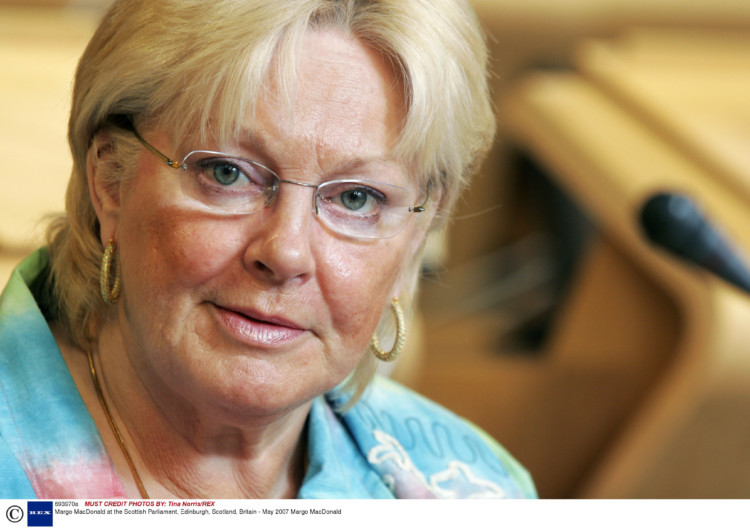
I can still remember Margo MacDonald calling me out of the blue nearly two years ago.
The Better Together campaign had just been formed and she’d thought of a better name for the group. “I’m going to call them,” she told me with a chuckle, “the abominable no men.”
It was typical Margo, an amusing yet also subtly political remark. Also typical was her lack of tribalism. She didn’t dislike Unionists and regarded them as generally decent and sincere individuals. They just, she thought, needed a bit more persuading.
And she could be very persuasive. As the SNP’s deputy leader in the mid-to-late 1970s, as a journalist in the 1980s and as a politician again after 1999, she had that rare ability of drawing people into her orbit.
Her motivation was two-fold: firstly, she genuinely liked people; secondly, it was politically useful to have a wide circle of friends and admirers.
This she did without any obvious cynicism, and for someone like me, in 2001 a wet-behind-the-ears television reporter plunged into the world of Scottish politics for the first time, it was of course immensely flattering for a figure I’d been aware of since childhood to take me seriously and even remember my name.
Except initially she didn’t. When we first got to know one another Margo used to get me confused with BBC Scotland reporter Glenn Campbell.
Naturally I corrected her, and it then became a bit of a running joke. Even last year she would start telephone conversations with ‘Now, Glenn’ It betrayed a mischievous sense of humour that was immensely engaging.
She could, of course, rub some people up the wrong way. Margo had fallen out with the SNP in the early 1980s (but then, to be fair, so had Alex Salmond) and had remained semi-detached for much of the following decade. But in 1999 she was too high-profile to be blocked as a candidate for the first Scottish Parliament elections.
Although she harboured ambitions as a front-bench spokeswoman, Alex Salmond perhaps rightly sensed Margo was too much of a loose cannon to make an effective team player. Ironically, she was just too independent.
And later, once Salmond had quit Edinburgh for London and Margo had supported Alex Neil then regarded as an unreconstructed fundamentalist as his successor, the SNP came to regard her as a prima donna.
There was some truth in this she was prone to often overcooked conspiracy theories involving her political enemies but then in the early years of devolution she was a political star and knew it.
Even so, her effective deselection by the SNP (she was ranked fifth on the Lothians list) was symptomatic of the party in a vindictive, dysfunctional phase before the whiff of power turned it into the tight ship it remains to this day. Despite the warm tributes of the past few days, I well remember the vitriol directed her way in the run up to the 2003 elections.
I co-produced an STV documentary called, unoriginally, Margo Goes to Holyrood, which followed her first campaign as an ‘independent Nationalist’, and it was quite an experience.
Just as Labour had got its fingers burned with dissident members in 1999 (notably Dennis Canavan), her considerable victory in 2003 (attracting enough votes to elect two Margos) was humiliating for her old party.
It also demonstrated she could attract votes from across the political spectrum. People wanted to agree with Margo, even those opposed to independence and her ecumenical style and broad-church approach actually anticipated the SNP’s electoral successes in 2007 and 2011.
And while relations between her husband Jim Sillars and Alex Salmond remained frosty, Margo managed to maintain a good relationship with the First Minister.
Salmond realised the ‘blonde bombshell’ of Govan by-election fame was the sort of figure the wider independence movement could not do without. Even Salmond’s Labour predecessor, Jack McConnell, went out of his way to help Margo during the 2003 election by announcing an inquiry into the Holyrood building saga.
She was also a model ‘independent’ member of the Scottish Parliament, choosing her campaigns carefully and also being savvy enough to cut deals with a minority SNP government come budget day. Obviously she had faults, but Margo was a class act.
Holyrood won’t seem the same without her gliding by on a mobility scooter, waving at friend and foe alike with a twinkle in her eye.

Enjoy the convenience of having The Sunday Post delivered as a digital ePaper straight to your smartphone, tablet or computer.
Subscribe for only £5.49 a month and enjoy all the benefits of the printed paper as a digital replica.
Subscribe